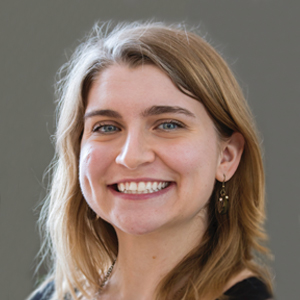JBC: Sugary secrets of a cancer-related protein
The proteins in human cells are extensively decorated with different types of sugars, a phenomenon called glycosylation. These modifications greatly increase the diversity of protein structure and function, affecting how proteins fold, how they behave, and where they go in cells. New research published in the Journal of Biological Chemistry demonstrates that a rare type of glycosylation profoundly affects the function of a protein that is important for human development and cancer progression.
 Sugars fill the “notches” in the Notch receptor. The glycan stabilizes the Notch EGF repeats and thereby regulates Notch trafficking in cells.courtesy of Robert Haltiwanger, University of Georgia
Sugars fill the “notches” in the Notch receptor. The glycan stabilizes the Notch EGF repeats and thereby regulates Notch trafficking in cells.courtesy of Robert Haltiwanger, University of Georgia
Protein glycosylation is either called N-linked or O-linked, depending on whether the sugar is attached to nitrogen- or oxygen-containing sites, respectively. O-linked modifications typically involve the sugar N-acetylgalactosamine being attached to the amino acids serine or threonine, called “mucin-type” glycosylation because they are commonly found in proteins in mucus membranes; together with N-linked sugars, these “canonical” modifications modify thousands of types of proteins.
For over 20 years, Robert Haltiwanger’s research group, now at the University of Georgia, has studied a rarer type of O-linked modification: attachment of the sugars glucose or fucose to serine or threonine, a modification that affects just a few hundred types of proteins. One of these proteins is Notch, a signaling receptor that is essential for cell development and differentiation and is dysregulated in cancers such as leukemia, breast cancer, and prostate cancer.
“The fact that we found these sugars on Notch was intriguing because Notch is a very important molecule,” Haltiwanger said. “So we’ve been curious about how these sugars affect [Notch’s] stability and activity.”
The enzymes responsible for modifying Notch with glucose and fucose are called POFUT1 and POGLUT1. Haltiwanger’s team, led by Hideyuki Takeuchi, wanted to know exactly why POFUT1 and POGLUT1 were attaching glucose and fucose to Notch in cells.
If you genetically engineer a fly or mouse without POFUT1 or POGLUT1, Haltiwanger said, “you get a dead fly or a dead mouse. You completely disrupt the Notch pathway; Notch is not functional if you don’t add those sugars. There’s been a lot of work over the years on: Why is that? What is [the sugar] doing?”
Haltiwanger’s new work shows that the fucose and glucose modifications serve as quality-control markers that allow Notch to be transported to its final destination in the cell membrane. When the researchers knocked out POFUT1 or POGLUT1 in cell cultures using CRISPR/Cas technology, cells displayed much less Notch on the cell surface. When both enzymes were knocked out, Notch was almost completely absent. Using additional biochemical methods, the researchers found that POFUT1 and POGLUT1 attached glucose and fucose to portions of Notch only after they fold in a specific way.
“It’s like a stamp of approval,” Haltiwanger said. “This part’s folded? Boom, you put a fucose on it. And somehow that tells the cell: Don’t mess with this anymore. Leave it alone. If you don’t add the sugar, [the Notch proteins] get stuck inside the endoplasmic reticulum, get degraded, and don’t get secreted.”
Knowing that these sugars are essential for Notch activity makes the enzymes that control them, POFUT1 and POGLUT1, potential targets for cancer treatments. Depending on whether Notch is overactive or insufficiently active in a particular cancer, manipulating the sugars that are added to Notch could help correct the dysregulation. Haltiwanger’s team is working on finding chemical compounds that would inhibit POFUT1 and POGLUT1, thus stopping Notch from embedding in the cell membrane and carrying out its signaling functions. They’re also attempting to unravel how the glucose and fucose modifications work together to fine-tune Notch activity.
“That’ll keep us busy,” Haltiwanger said.
Enjoy reading ASBMB Today?
Become a member to receive the print edition four times a year and the digital edition monthly.
Learn moreGet the latest from ASBMB Today
Enter your email address, and we’ll send you a weekly email with recent articles, interviews and more.
Latest in Science
Science highlights or most popular articles

Bacteriophage protein could make queso fresco safer
Researchers characterized the structure and function of PlyP100, a bacteriophage protein that shows promise as a food-safe antimicrobial for preventing Listeria monocytogenes growth in fresh cheeses.

Building the blueprint to block HIV
Wesley Sundquist will present his work on the HIV capsid and revolutionary drug, Lenacapavir, at the ASBMB Annual Meeting, March 7–10, in Maryland.

Gut microbes hijack cancer pathway in high-fat diets
Researchers at the Feinstein Institutes for Medical Research found that a high-fat diet increases ammonia-producing bacteria in the gut microbiome of mice, which in turn disrupts TGF-β signaling and promotes colorectal cancer.

Mapping fentanyl’s cellular footprint
Using a new imaging method, researchers at State University of New York at Buffalo traced fentanyl’s effects inside brain immune cells, revealing how the drug alters lipid droplets, pointing to new paths for addiction diagnostics.

Designing life’s building blocks with AI
Tanja Kortemme, a professor at the University of California, San Francisco, will discuss her research using computational biology to engineer proteins at the 2026 ASBMB Annual Meeting.

Cholesterol as a novel biomarker for Fragile X syndrome
Researchers in Quebec identified lower levels of a brain cholesterol metabolite, 24-hydroxycholesterol, in patients with fragile X syndrome, a finding that could provide a simple blood-based biomarker for understanding and managing the condition.

.jpg?lang=en-US&width=300&height=300&ext=.jpg)